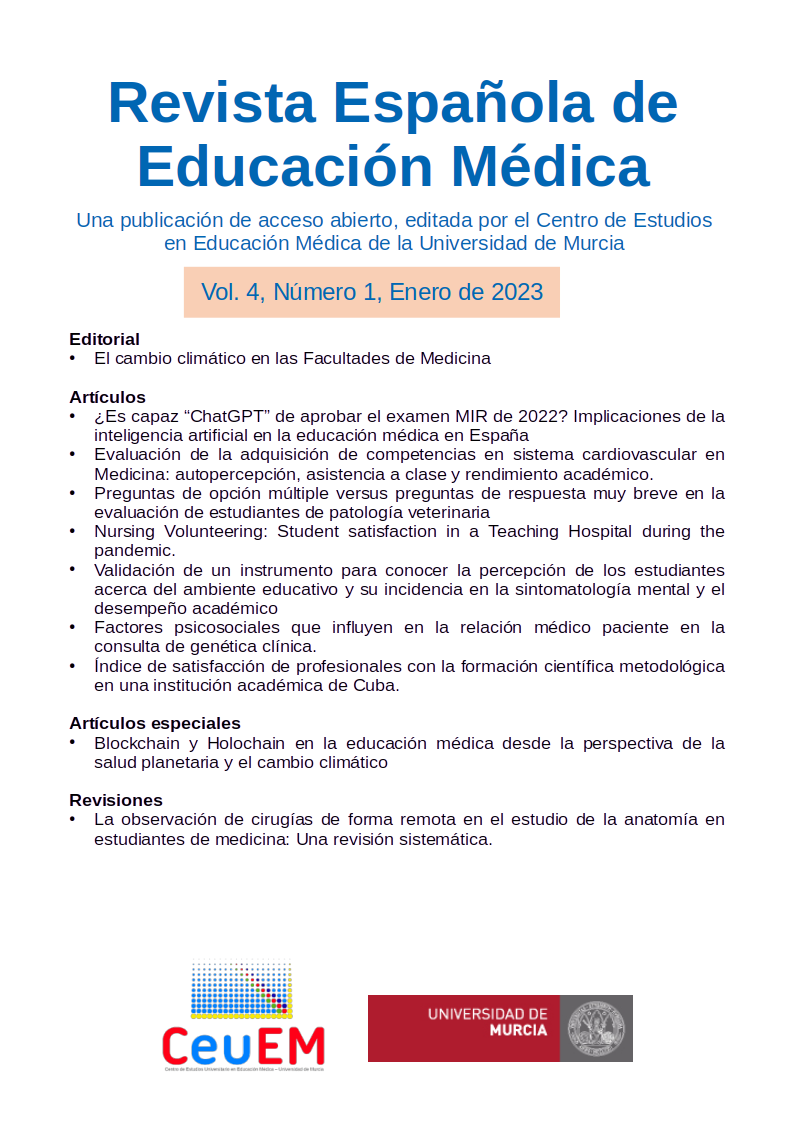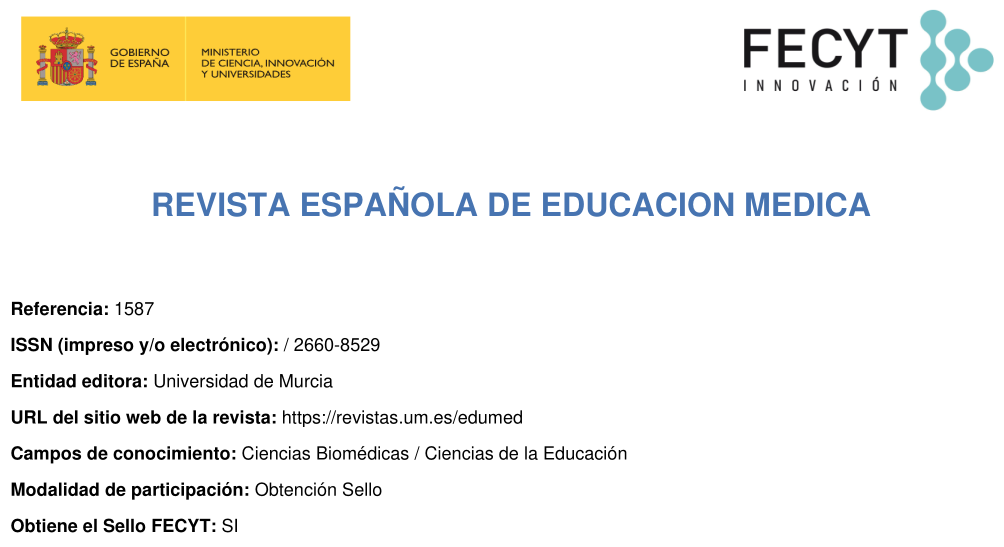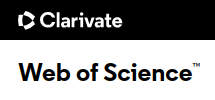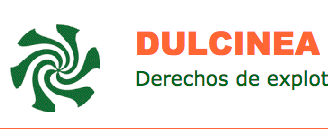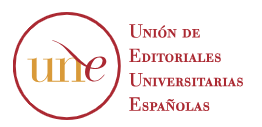Preguntas de opción múltiple versus preguntas de respuesta muy breve en la evaluación de estudiantes de patología veterinaria
Resumen
Background: Well-developed assessment methods have a positive impact on students’ performance, and higher education institutes are usually encouraged to establish and use effective assessment methods that effectively enhance the learning process. Objectives: This study was designed to compare students’ performance in multiple choice questions (MCQs) including best single answer (BSA) and multiple true and false (MTF) types, and very short answer (VSA) questions, and to evaluate gender differences and feedback from students and faculty. Materials and methods: A test containing three different types of questions, BSA, MTF and VSA questions (10 each), was delivered to eight groups of veterinary pathology students (3rd level, Faculty of Veterinary Medicine, Assiut University, Assiut, Egypt) in April 2022. Students’ performance, test reliability and gender differences as well as feedback from students and faculty were evaluated. Results: Students did a significant higher performance in BSA and MTF questions compared to VSA questions. The reliability of BSA, MTF and VSA questions between different groups of students were 0.53, 0.52 and 0.13, respectively. Girl students achieved a higher performance in the whole test compared to boy students. Both boy and girl students showed nearly similar performance in BSA and MTF questions. However, girl students got significant higher score in VSA questions compared to boy students. Students’ and faculty opinions were in favor of BSA and MTF questions. Conclusion: Students did much better in MCQs than VSA questions. BSA and MTF questions are preferentially favored by students and faculty.
Descargas
Métricas
-
Resumen326
-
pdf 856
Citas
Nettles MT. History of Testing in the United States: Higher Education. The annals of AAPSS, 2019. 683, 38-55.
Gronlund N. Assessment of Student Achievement. Third Custom Edition for the University of Alberta. Toronto: Pearson Education, 2006.
Kankhare SB, Patil AD, Bahetee BH. Perception of students on various format of written assessments in higher education. Indian Journal of Anatomy 2019, 8, 2015-2018.
Puthiaparampil T, Rahman MM. Very short answer questions: a viable alternative to multiple choice questions. Medical Education 2020, 20, 141.
Alquraan MF. Methods of assessing students’ learning in higher education: An analysis of Jordanian college and grading system. Education, Business and Society: Contemporary Middle Eastern Issues 2012, 5, 124-133.
Shavelson RJ. On an approach to testing and modeling competence. Educational Psychologist 2013, 48, 73-86.
Stiggins R. Student-involved Assessment for Learning, 4th ed., Pearson, Columbus, OH, 2005.
Falchicov N. Improving Assessment Through Student Involvement: Practical Solutions for Aiding Learning in Higher Education and Further Education, Routledge, New York, NY, 2005.
Klenowski V. Connecting assessment and learning, paper presented at the British Educational Research Association Annual Conference, Lancaster University, September 12-15, 1996.
Ozden Y, Ertuk I, Sanli R. Students’ perceptions of online assessment. Journal of Distance Learning 2004, 19, 77-93.
White C. Student portfolios: an alternative way of encouraging and evaluating student learning. New Directions for Teaching & Learning, 2004, 100, 37-42.
Ruiz-Primo M, Min L, Ayuala C, Shavelson, R.J. Evaluating students’ science notebooks as an assessment tool. International Journal of Science Education 2004, 8, 1477-506.
Thomas RM, Kaipa R. The use of non-speech oral-motor exercises among Indian speechlanguage pathologists to treat speech disorders: an online survey. South African Journal of Communication Disorders 2015. 62, 1-12.
Pepple DJ, Young LE, Carroll RG. A comparison of student performance in multiple-choice and long essay questions in the MBBS stage I physiology examination at the University of the West Indies (Mona Campus) Adv Physiol Educ 2010, 34, 86-89.
Sam AH, Field SM, Collares CF, van der Vleuten CP, Wass VJ, Melville C, Harris J, Meeran K. Very-short-answer questions: reliability, discrimination and acceptability. Med Educ 2018, 52, 447-55.
Sam AH, Hameed S, Harris J, Meeran K. Validity of very short answer versus single best answer questions for undergraduate assessment. BMC Med Educ 2016. 16, 266.
Manoharan S. Cheat-resistant multiple-choice examinations using personalization. Computer & Education 13, 139-151.
Puthiaparampil T, Gudum HR, Rahman MM, Saimon R, Lim IF. True-false analysis reveals inherent flaws in multiple true-false tests. Int J Community Med Public Health 2019, 6, 4204-8.
Funk SC, Dickson KL. Multiple-Choice and Short-Answer Exam Performance in a College Classroom. Teaching of Psychology 2011, 38, 273-277.
Burton RF. Multiple-choice and true/false tests: myths and misapprehensions. Assess Eval High Educ 2005, 30, 65-72.
Al-Rukban MO. Guidelines for the construction of multiple choice questions tests. Journal of Family & Community Medicine 2006, 13, 125-133.
Kelly S, Reg D. Evidence of gender bias in True-False-Abstain medical examinations. BMC Medical Education 2009, 9, 32.
Foster N. Analysis of Short-Answer Question Styles versus Gender in Pre-Clinical Veterinary Education. JVME 2011, 38, 67-73.
Andrew WJ, Raptis H. Gender Differences in Introductory Atmospheric and Oceanic Science Exams: Multiple Choice Versus Constructed Response Questions. Journal of Science Education and Technology 2001, 10, 115-126.
Kaipa RM. Multiple choice questions and essay questions in curriculum. Journal of Applied Research in Higher Education 2021, 13, 16-32.
Bird JB, Olvet DM, Willey JM, Brenner J. Patients don’t come with multiple choice options: essay-based assessment in UME. Medical Education Online 2019, 24, 1649959.
Parmenter DA. Essay versus multiple-choice: student preferences and the underlying rationale with implications for test construction. Academy of Educational Leadership Journal. 2009, 13, 57-71.
Mullen K, Schultz M. Short answer versus multiple choice examination questions for first year chemistry. International Journal of Innovative Science and Modern Engineering 2012, 20, 1-18.
Derechos de autor 2022 Servicio de Publicaciones de la Universidad de Murcia

Esta obra está bajo una licencia internacional Creative Commons Atribución-NoComercial-SinDerivadas 4.0.
Las obras que se publican en esta revista están sujetas a los siguientes términos:
1. El Servicio de Publicaciones de la Universidad de Murcia (la editorial) conserva los derechos patrimoniales (copyright) de las obras publicadas y favorece y permite la reutilización de las mismas bajo la licencia de uso indicada en el punto 2.
© Servicio de Publicaciones, Universidad de Murcia
2. Las obras se publican bajo una licencia Creative Commons Reconocimiento-NoComercial-SinObraDerivada 4.0.
![]()
3. Condiciones de auto-archivo. Se permite y se anima a los autores a difundir electrónicamente las versiones preprint (versión antes de ser evaluada y enviada a la revista) y/o post-print (versión evaluada y aceptada para su publicación) de sus obras antes de su publicación, ya que favorece su circulación y difusión más temprana y con ello un posible aumento en su citación y alcance entre la comunidad académica.

